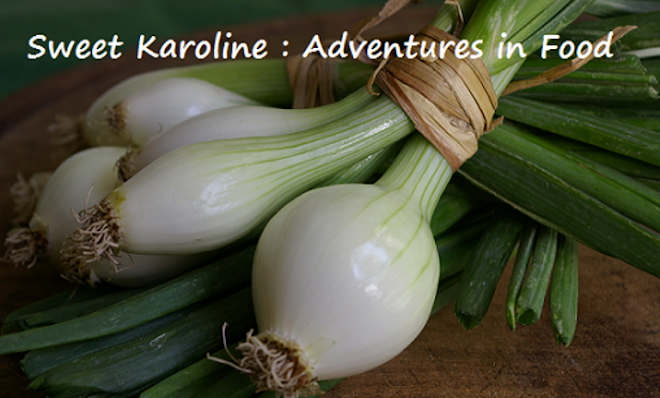
Making yogurt at home is incredibly easy and does not require much specialized equipment. However, as most fermentations go, it is a somewhat lengthy project. If you have a yogurt maker, feel free to use it. If not, try this method. A hot water bottle can be used in place of the heating pad. The only important factor is that the milk must remain at a temperature around 110 degrees for 8 hours or so. The desired thickness is up to you. Strain until it reaches a consistency of your liking. We used a dollop of Fage Greek yogurt to start our yogurt, but in the future, we will not be using a commercially produced starter. With every batch made, we will set aside enough to begin the next batch.
Once the process is finished, you may use it as a spread (IE. on a smoked salmon sandwich), as the base for dips, sauces, and dressings, or as a simple breakfast. For a relatively unprocessed granola recipe, check out this link to the Boston Globe. A recipe that I have made many times, it was contributed by my predecessor, the former pastry chef at Flour Bakery and Cafe and the current owner of Ula Cafe, Korinn Koslofsky.
1 half gallon skim milk
2 heaping tablespoons yogurt (as a starter)
1. In a large bowl, set over a large pot of simmering water, heat to milk to 185 degrees, stirring often.
2. Remove the bowl from pot and cool, stirring, until the milk reaches 110 degrees.
3. Whisk in yogurt.
4. Pour mixture into a non-reactive container (like glass or stainless steel). Cover the opening of the container with cheesecloth, butcher paper, or a coffee filter. Secure with a rubber band.
5. Place container inside a cooler, and wrap container with a heating pad. Place lid on cooler. Turn on heating pad in order to maintain a temperature of 110 degrees inside the cooler for 8-10 hours. We set our heating pad on medium, but you will have to experiment with your own.
6. Chill yogurt in refrigerator overnight. At this stage, you may consume the yogurt, but we prefer a thicker style.
7. Place yogurt in cheesecloth or a very fine mesh sieve. Wrap the yogurt inside the cloth, and suspend it over a container in the refrigerator. Allow the yogurt to drain overnight.
8. Check consistency of yogurt. If it is too stiff for your liking, stir in some of the liquid that collected in the container.








What if you don't keep it at 110F? If you just let it hang out on the counter for a few days will it yogurt, just at a slower pace?
ReplyDeleteI had the great fortune of meeting a group of amazing people while studying in Spain my sophomore year in college. I was so touched by some of the emails that I have received from them that I wanted to share them here. Thanks, Mark and Haley -- and everyone else whose comments are sprinkled amongst the other posts!
ReplyDeleteKaroline - I've just been reading through some of your blog entries and I am litterally blown away. I don't know what to say. Congrats on your weight loss and your continued travels (I'm so jealous) and I look forward to following your progress and maybe even trying out a few of your recipes!
Hey - Just have to say "thank you" for your awesome blog and amazing recipes. I always knew you would do something cool in life, and it is so fun to see that your recipes are all over the land!! :) I love trying your recipes and being able to say they are from an old college pal who is an incredible chef! :) I hope you are still loving SF. Would love to see you again someday!
kristina- i imagine that is true, but i don't have the evidence to say yes. if you try it out, let me know if it works!
ReplyDeleteI made yogurt once with whole milk supplemented liberally with half-and-half. It was delightful, as you might imagine... I used the several days on the counter method.
ReplyDeleteAnyway: if you're trying to get heart disease, you can help yourself accomplish this -- deliciously -- by making fattier yogurt!
No doubt, delicious! Most things that are not healthy are sinfully delicious and worth indulging in from time to time.
ReplyDeleteI was inspired to do some reading about yogurt-making. There's some debate about whether to scald the milk. The two main reasons to do so are to have more consistent results (by destroying competing bacteria and enzymes) and to produce a smoother texture (by unfolding the milk proteins at that temperature). The main reasons not to scald the milk would be to preserve some nutrition and probiotics (especially when using raw milk) and to save energy/time. Everyone seems to suggest at least warming the milk (minimally 100, maximally 110 if using raw milk and not wanting to destroy enzymes). I think any less and the milk will naturally curdle before the yogurt can set, but it would be interesting to experiment!
ReplyDeleteIt looks like Harold McGee (NYT) had success making yogurt inside containers wrapped in a towel or blanket, so that might be a slightly easier way. Another idea is to use a Thermos. Most of the recipes suggest sealing the container with a lid if it has one.
I'm also tempted to experiment with goat milk and sheep milk. It sounds like yogurt made from sheep milk is the bomb!
It can also be a good idea to sanitize the container with boiling water well before adding the milk and yogurt...
ReplyDeleteI finally got around to making yogurt last night! We even had some Fage around, so I used that for the starter. It turned out pretty well, very smooth! So I did what I always do when I have a bunch of plain yogurt: make cucumber raita!
ReplyDeleteI was looking at the Fage nutrition facts -- 10% fat, no wonder it's so good!
Arun- I'm thrilled to hear that you made yogurt...wish I could have been there to eat raita with you!
ReplyDeleteFage is truly the bomb.com! Even the fat free version is totally delicious and shockingly creamy.
This week I experimented by making yogurt two different ways: 1 quart milk heated to 185 degrees (scalded) and then cooled to 110, another quart warmed to 110. Both were cultured at the same time from the same yogurt mother and kept warm together.
ReplyDeleteThe result: the yogurt from scalded milk is a bit tangier and perhaps a bit thicker. Jane described the other yogurt (from warmed, not scalded, milk) as being more milky, less yogurty. So I'm straining out the whey now, and we'll see what comes of that.